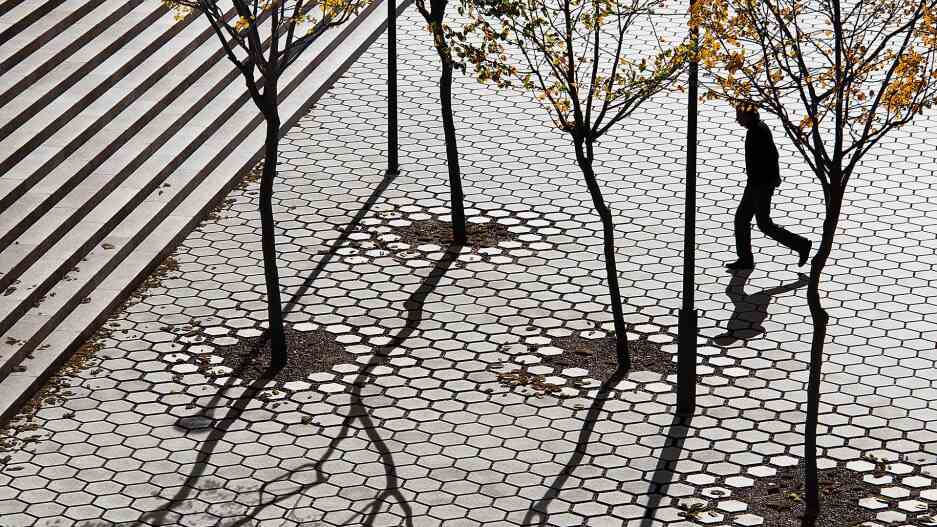- | 8:00 am
These gorgeous pavers prevent flooding, thanks to a clever detail
Snohetta has designed Flyt, a modular system made of hexagonal stones that are permeable—and unusually attractive.

Cities aren’t built to withstand floods. Climate change is causing more frequent (and severe) storms, which in turn are causing more frequent (and severe) flash floods. And in a sea of concrete, all that water has nowhere to go but inside people’s homes.
This has led to various water-management tools, from sponge parks to “water squares” to permeable pavers. The last category is designed to either let stormwater flow through porous blocks or pass in between them. By no means are permeable pavers new—they’ve been used in roads, driveways, parking areas, and some plazas around the world—but most of these projects have been led by engineers or specialized contractors and have lacked the flexibility and cohesive look that only designers can plan for. In other words, a solution that has proven to alleviate the impact of flooding hasn’t quite gone mainstream yet, in part because existing products are rarely aesthetically pleasing.
Enter Snohetta, the celebrated Norwegian architecture studio behind the Oslo Opera House and the extension to SFMOMA. Snohetta has designed a modular permeable system named Flyt that is made up of three hexagonal stones of varying sizes. Crucially, the system is designed so that the spacing between the stones can change from less than an inch to about 2.3 inches, allowing for various degrees of permeability, depending on the use. Two years in the making, Flyt was developed in collaboration with Norwegian concrete paver manufacturer Asak, which had three permeable pavers in its portfolio but nothing that catered to urban spaces.
By contrast, Flyt was designed specifically for urban spaces like parks and plazas, although it also can be applied in parking areas, loading zones, and other functional spaces (where most permeable pavers are currently found.) In a large square with heavy traffic, architects could opt for pavers that allow for the smallest gap in between them. In spaces with not much foot traffic, like secondary pathways or wells around trees, they could use small pavers with bigger gaps in between, guaranteeing a seamless transition between the two. “You can suggest pathways, you can suggest transitions and different uses, and what we have put together are just a few initial ways of starting to use [them],” says Marius Myking, director of product design at Snohetta. “The real excitement is seeing how other creatives start using these.”
The gap difference is possible because each stone has a different interlocking system. The smallest stone has the biggest “teeth” jutting out, so when the stones interlock, the gap in between is naturally bigger. By the same logic, the biggest stone has the smallest teeth, so the gap is smaller. Depending on the gap, the system has up to 28% permeability, meaning that 28% of the ground is entirely permeable. This may not sound like much, but it’s more than twice the Norwegian standard, says Myking.
It’s too soon to see how the stones will perform in real life, but Myking says the pavers are already being planned for two public spaces in Norway. Snohetta hasn’t yet found use for it in its own projects, but as Myking notes, “I’d be very surprised if it doesn’t pop up here and there.”
As cities continue to look for innovative ways to fight climate change, such seemingly small interventions could reap big results if rolled out at scale.








































